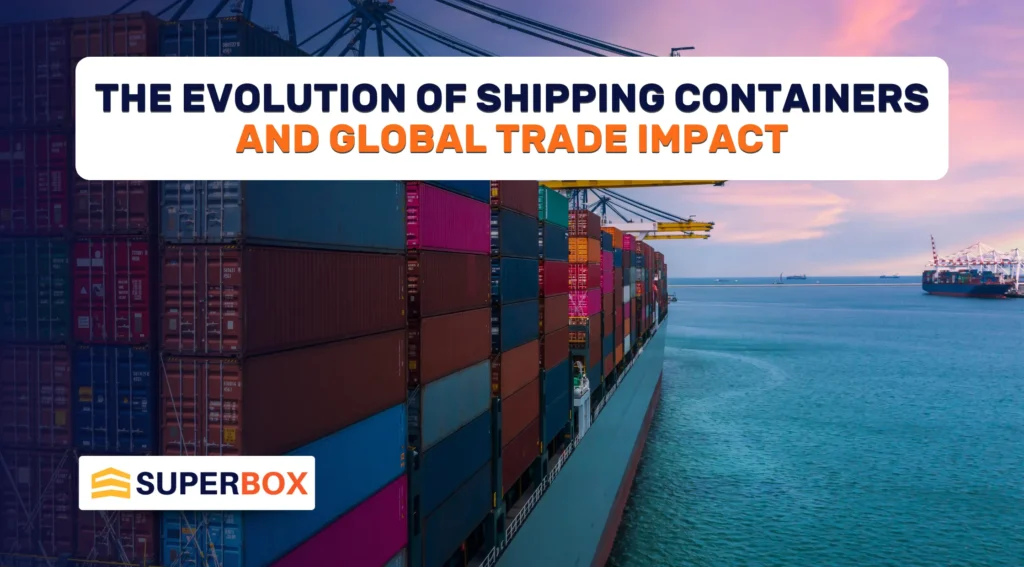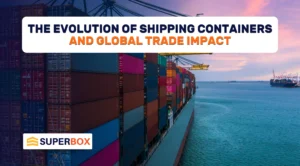Before shipping containers, the maritime industry used break-bulk shipping, where goods were loaded individually onto ships. This method was slow and inefficient, requiring a lot of labor and increasing the chances of damage or theft.
The introduction of standardized shipping containers changed everything. These uniform boxes made it possible to pack and move large quantities of goods quickly and securely. This innovation sped up loading and unloading at ports, reducing delays and costs.
In this blog, we’ll explore the rise of shipping containers and their impact on global trade, including initial resistance, Malcom McLean’s vision, and key developments like standardized sizes and modern technology. Discover how container shipping transformed international trade!
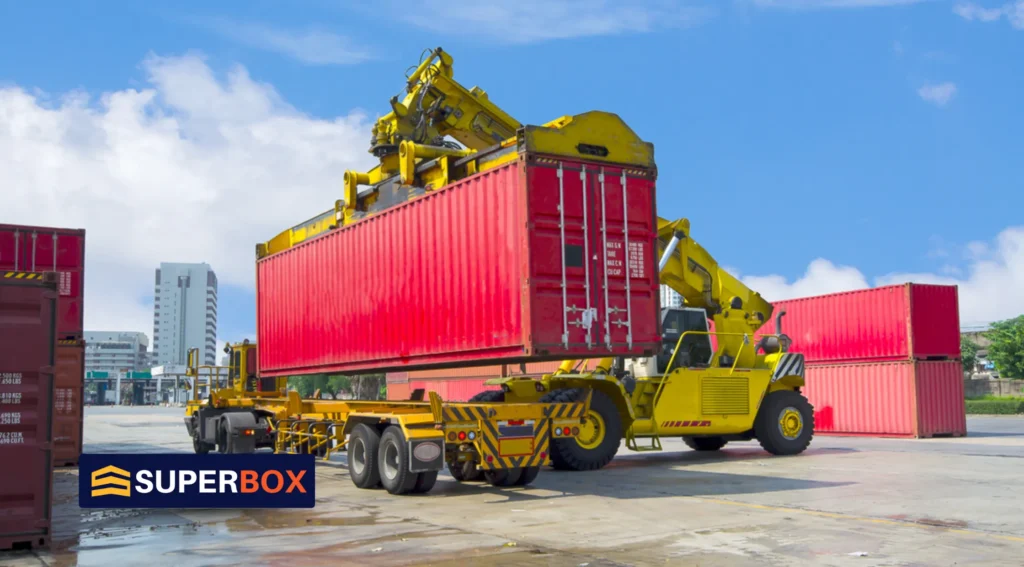
Initial Resistance to Containers
The introduction of shipping containers faced significant challenges. Many companies were hesitant to shift from traditional methods, and cultural resistance further complicated the transition. These include:
The Challenges Faced
When shipping containers were first introduced, they faced a lot of pushback from established shipping companies. Many of these companies were unsure about changing from traditional shipping methods that had worked well for years. The upfront costs of buying containers and building the needed infrastructure seemed overwhelming for many businesses.
There was also a lot of resistance from workers, especially in port cities where people were used to the old break-bulk shipping methods. Workers were familiar with handling individual items rather than standardized containers, which made them hesitant to embrace the change.
The process of loading and unloading containers required new skills and technologies, complicating the transition even further. Many viewed this shift as time-consuming and disruptive, which added to the reluctance to adopt this new system.
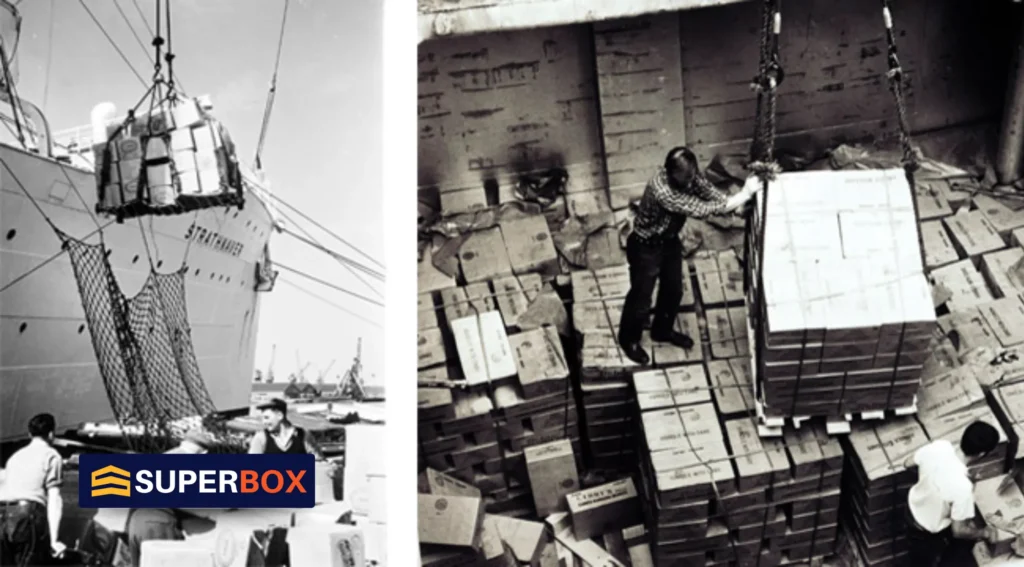
The Container Revolution
The container revolution changed shipping, boosting efficiency and lowering costs. Here’s how it reshaped global trade.
Rapid Adoption
The shipping industry changed dramatically in the 20th century because of Malcolm McLean’s groundbreaking idea of containerization. In the 1950s, he recognized that using standardized boxes could make shipping much more efficient. This idea gained popularity during World War II when the demand for better logistics revealed the problems with traditional break-bulk shipping, which was slow and clunky.
After the war, strong economic growth further increased the adoption of containers. As global trade expanded, more businesses recognized that using containers could lower the cost of shipping. This change not only streamlined the shipping process but also made it easier for companies, including truck companies, to participate in international trade. McLean’s vision reshaped the entire shipping industry, creating the efficient global supply chain we depend on today.
Impact on Global Trade
Shipping containers have been key in reducing transportation costs, making it easier for more businesses to participate in international trade. By connecting containers with trucks, trains, and ships, a smooth global supply chain was established, allowing goods to move quickly and efficiently across borders. This change has helped companies access new markets and grow their customer bases.
As containerized shipping gained popularity, port cities had to adapt to these new demands, leading to significant transformations in their economies and infrastructures. They upgraded facilities and processes to handle the increased volume of container traffic. Even during the Vietnam War, the need for efficient shipping became more evident, highlighting how far traditional shipping methods had progressed with the adoption of standardized containers. This evolution not only improved logistics but also contributed to the growth of a more interconnected global economy.
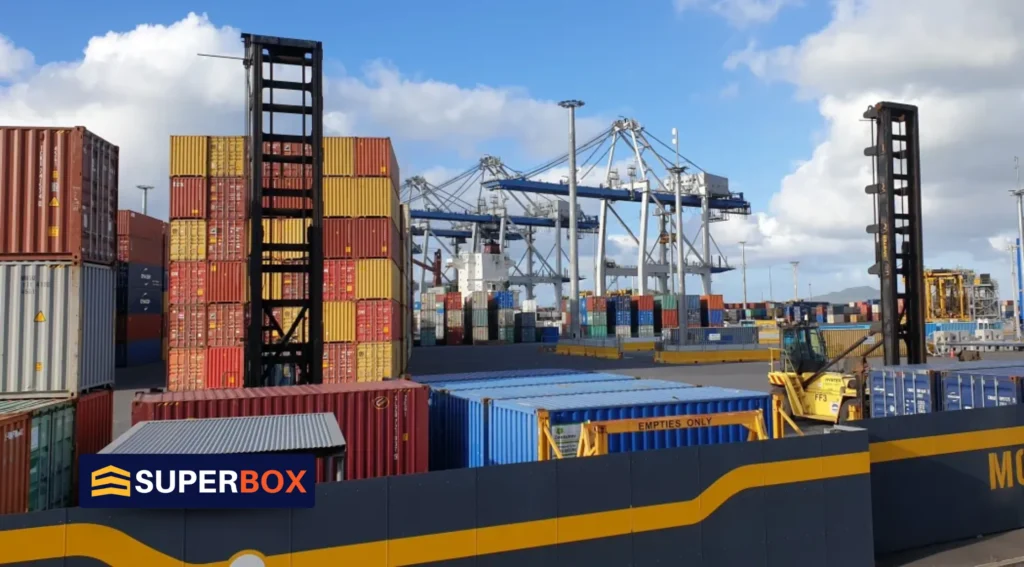
Key Developments in Containerization
A key milestone in global trade was the introduction of standard shipping container sizes, particularly the 20-foot and 40-foot boxes. These standard sizes made it much easier to stack and move cargo, improving how space is used on ships and boosting efficiency.
Additionally, the shift towards larger ships allowed for even more goods to be transported at once, which helped lower shipping costs even further. Technological advancements, like better tracking systems and improved logistics management, have also transformed the industry. These innovations make shipping more efficient and allow companies to meet the growing demands of global trade. Together, these changes have reshaped the way goods move around the world.
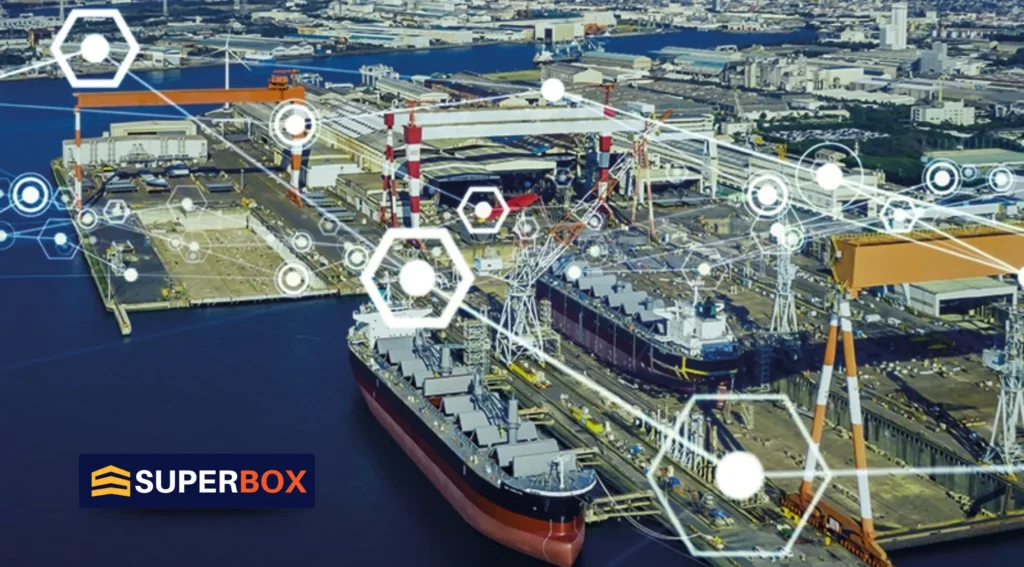
The Role of Technology
Technology is essential in the modern container shipping industry. Automation has revolutionized ports by utilizing AI and robotics to enhance the loading and unloading processes of containers. This not only speeds up operations but also increases accuracy and efficiency. Additionally, advanced tracking systems now allow shipping companies to monitor their containers in real-time, greatly improving logistics and supply chain management.
As environmental concerns become increasingly urgent, the industry is also focusing on eco-friendliness. Many companies are investing in cleaner technologies to reduce the environmental impact of shipping. This commitment to innovation demonstrates that the container shipping sector is adapting to meet new challenges while striving for a greener future. By embracing these technological advancements, the industry can improve efficiency and contribute to environmental protection.
Conclusion
The evolution of shipping containers changed the world trade. At first, shipping containers faced resistance, but they have changed how goods are transported worldwide. They have reduced shipping costs and created a smooth supply chain that links trucks, trains, and ships, making it easier for businesses to trade internationally.
Key developments, like standardized container sizes and advancements in technology, have boosted shipping efficiency. Automation and real-time tracking have revolutionized port operations, while sustainable practices are now prioritized to address environmental concerns. Overall, these humble shipping containers, introduced by Malcolm McLean, have reshaped economies and redefined logistics. Their impact is clear, marking a pivotal moment in how we approach trade and commerce today.
Discover the Impact of Shipping Containers with SuperBox!
At SuperBox, we know that shipping containers have changed global trade, and we’re here to offer you the best choices. Our high-quality containers are built to maximize efficiency and keep your goods safe during transport.
With a wide range of containers to choose from, we prioritize your satisfaction above all else. Whether you’re an individual, a small business, or a large corporation, we have the perfect solution for you!
Ready to elevate your shipping game? Contact us today at 210-557-006! Let SuperBox help you navigate the world of shipping containers with confidence!

